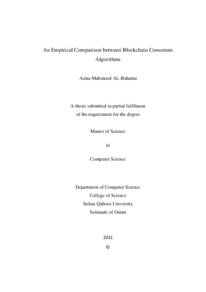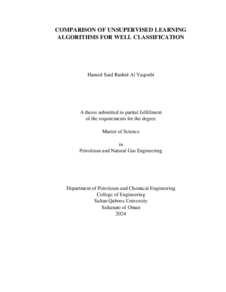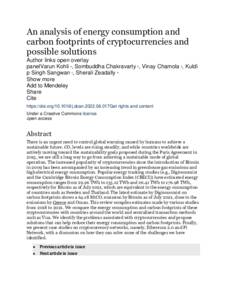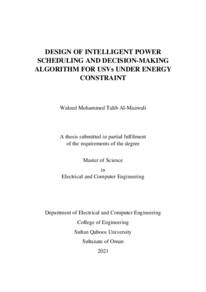Document
An Empirical comparison between Blockchain consensus algorithms.
Identifier
Al-Bahanta, Asma Mahmood (2021). An Empirical comparison between Blockchain consensus algorithms (Master thesis, Sultan Qaboos University, Muscat, Oman).
Publisher
Sultan Qaboos University.
Gregorian
2021
Language
English
Subject
English abstract
Blockchain technology has been rapidly spreading around the world, as different
business competitors have been racing to adopt this new technology in various
economic sectors. We can simply define blockchain as a distributed ledger or a record
book with data shared between the participants in a network. The first and most
famous application of a blockchain is Bitcoin, which is a P2P electronic cash system
developed by Satoshi Nakamoto in 2008. This technology has gained attention for its
characteristics such as decentralization, stability, security, and immutability. To
achieve these characteristics, blockchain relays on its consensus algorithm. Since
2008, many consensus algorithms have been developed to meet the different
requirements of various blockchain-based applications in different economic sectors.
These algorithms determine the efficiency and security of a blockchain as well as
preventing double-spending and Byzantine Generals Problem.
Moreover, there have been several studies that evaluated different consensus
algorithms. This study presents an empirical comparison between two of the most
common consensus algorithms, Proof of Work (PoW) and Proof of Stake (PoS). This
comparison considers time taken to reach a consensus (T consensus) in the network
by each algorithm and fork rate as main performance metrics while manipulating
system parameters such as number of nodes, block generation interval and block size.
To the best of our knowledge this is the first empirical study to evaluate and compare
the performance of different consensus algorithm in a blockchain network. Eventually,
this study will serve as a guide to help implement the suitable consensus algorithm for
a blockchain network.
Member of
Resource URL
Arabic abstract
تنتشرتقنية البلوكتشين بسرعة في جميع أنحاءالعالم، حيث يتنافس رواد الإعمال لتبني هذهالتكنولوجيا الجديدة في مختلف القطاعات الإقتصادية. يمكننا ببساطة تعريف البلوكتشين على أنه قاعدة بيانات مشتركة للمعامالت المالية التي يتم حفظها على أجهزة حاسوب متعددة في مواقع مختلفة. أول وأشهر تطبيق لـ تقنية البلوكتشين هو البيتكوين، وهو نظام نقدي إلكتروني طوره ساتوشي ناكاموتو في عام 8002 .وقد اكتسبت هذه التكنولوجيا الإنتباه لخصائصها العديدة مثل الالمركزية والإستقرار والإمن والثبات. لتحقيق هذه الخصائص، تعتمد البلوكتشين على خوارزمية الإجماع الخاصة بها. منذ عام 8002 ،تم تطوير العديد من خوارزميات الإجماع لتلبية المتطلبات المختلفة للتطبيقات المختلفة القائمة على تقنية البلوكتشين في القطاعات الإقتصادية المختلفة. تحدد هذه الخوارزميات كفاءة وأمن شبكة البلوكتشين وكذلك منع الإنفاق المزدوج ومشكلة الجنرالإت البيزنطيين. ا، إثبات العمل ) ً ستقدم هذه الدراسة مقارنة تجريبية بين اثنتين من أكثرخوارزميات الإجماع شيوع PoW )وإثبات الحصة )PoS .)في هذه المقارنة نأخذ في عين الإعتبار الوقت المستغرق للوصول إلى إجماع الكلي ) consensus T )في الشبكة بواسطة كل خوارزمية ومعدل الإنقسام في سلسلة الكتل )rate fork )لمقارنة أداء الشبكة أثناء التحكم بمؤشرات النظام الإخرى مثل عدد الكتل وفاصل إنشاء الكتلة وحجم الكتلة وتقييم تأثيرها على أداء البلوكتشين . تعد هذه الدراسة هي الإولى من نوعها لدراسة خوارزميات الإجماع حيث انها قائمة على مقارنة عملية ألداء اثنين من اشهر خوارزميات الإجماع. ستكون هذه الدراسة بمثابة دليل مساعد في اختيار وتطوير خوارزميات الإجماع المناسبة لشبكة البلوكتشين.
Category
Theses and Dissertations





